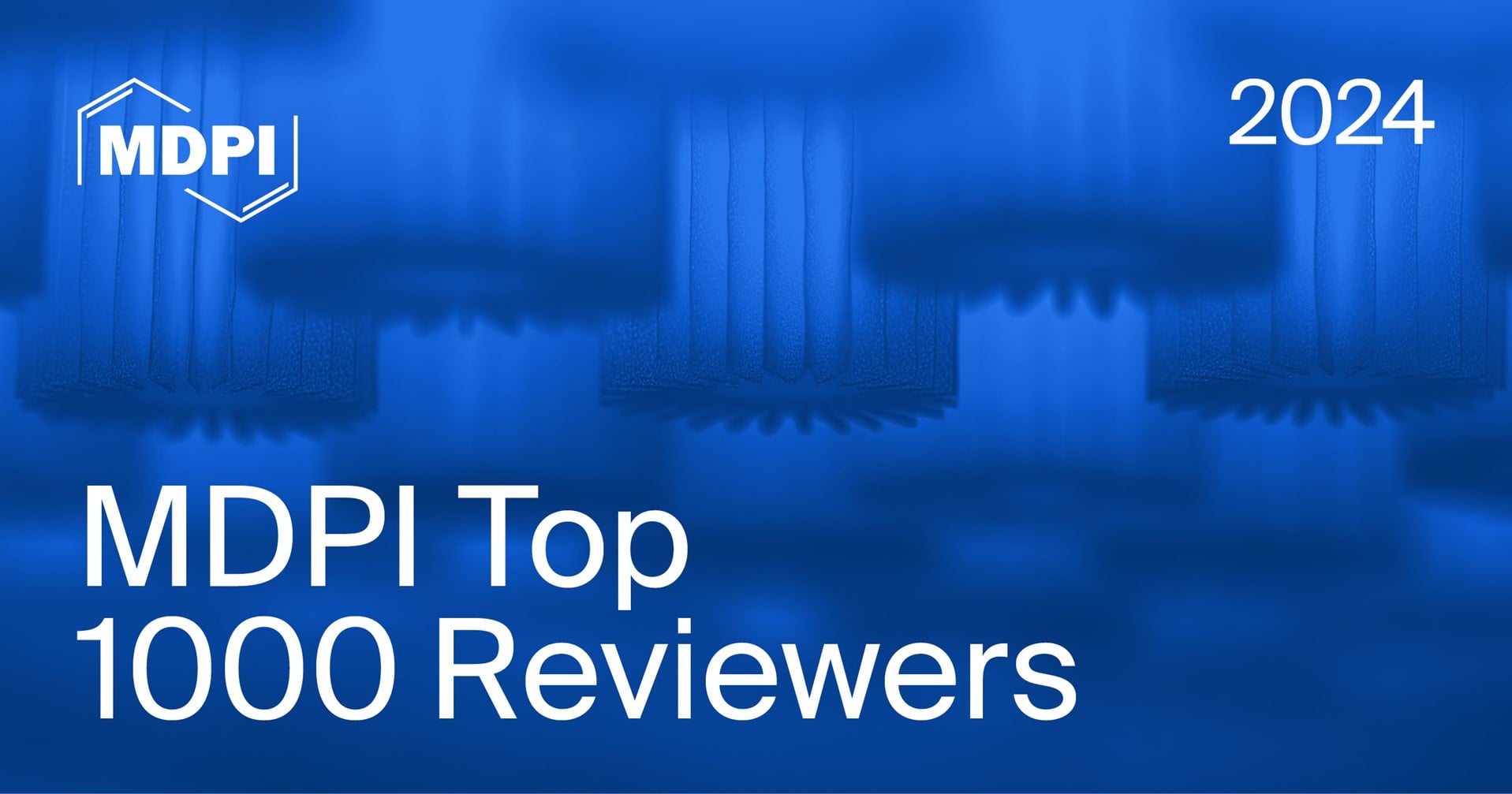Please note that, as of 22 March 2024, Psych has been renamed to Psychology International and is now published here.
Journal Description
Psych
Psych
is an international, peer-reviewed, open access journal on psychiatric sciences and psychology, published quarterly online by MDPI.
- Open Access— free for readers, with article processing charges (APC) paid by authors or their institutions.
- Rapid Publication: first decisions in 19 days; acceptance to publication in 4 days (median values for MDPI journals in the first half of 2025).
- Recognition of Reviewers: APC discount vouchers, optional signed peer review, and reviewer names published annually in the journal.
Latest Articles
Qualitative Pilot Interventions for the Enhancement of Mental Health Support in Doctoral Students
Psych 2024, 6(1), 426-437; https://doi.org/10.3390/psych6010025 - 14 Mar 2024
Cited by 1
Abstract
Doctoral degrees include Doctor of Philosophy (PhD) and other professional doctorates such as Engineering Doctorate (EngD), Doctor of Education (EdD), or Doctor of Clinical Psychology (DClinPsy). Unlike undergraduate- or postgraduate-taught students, doctoral study focuses on a single, autonomous piece of research. Research indicates
[...] Read more.
Doctoral degrees include Doctor of Philosophy (PhD) and other professional doctorates such as Engineering Doctorate (EngD), Doctor of Education (EdD), or Doctor of Clinical Psychology (DClinPsy). Unlike undergraduate- or postgraduate-taught students, doctoral study focuses on a single, autonomous piece of research. Research indicates a high occurrence of mental health problems in doctoral students. This paper describes the piloting and qualitative evaluation of a range of interventions designed to enhance the mental health support for doctoral students at one UK university. These interventions sought to target an array of known factors that affect the mental health of doctoral students, including individual capacity for coping with stress and social support availability.
Full article
Open AccessArticle
A Robust Indicator Mean-Based Method for Estimating Generalizability Theory Absolute Error and Related Dependability Indices within Structural Equation Modeling Frameworks
by
Hyeryung Lee and Walter P. Vispoel
Psych 2024, 6(1), 401-425; https://doi.org/10.3390/psych6010024 - 14 Mar 2024
Cited by 3
Abstract
►▼
Show Figures
In this study, we introduce a novel and robust approach for computing Generalizability Theory (GT) absolute error and related dependability indices using indicator intercepts that represent observed means within structural equation models (SEMs). We demonstrate the applicability of our method using one-, two-,
[...] Read more.
In this study, we introduce a novel and robust approach for computing Generalizability Theory (GT) absolute error and related dependability indices using indicator intercepts that represent observed means within structural equation models (SEMs). We demonstrate the applicability of our method using one-, two-, and three-facet designs with self-report measures having varying numbers of scale points. Results for the indicator mean-based method align well with those obtained from the GENOVA and R gtheory packages for doing conventional GT analyses and improve upon previously suggested methods for deriving absolute error and corresponding dependability indices from SEMs when analyzing three-facet designs. We further extend our approach to derive Monte Carlo confidence intervals for all key indices and to incorporate estimation procedures that correct for scale coarseness effects commonly observed when analyzing binary or ordinal data.
Full article
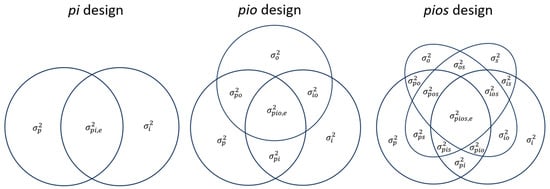
Figure 1
Open AccessArticle
Item Response Analysis of a Structured Mixture Item Response Model with mirt Package in R
by
Minho Lee, Yon Soo Suh and Minjeong Jeon
Psych 2024, 6(1), 377-400; https://doi.org/10.3390/psych6010023 - 8 Mar 2024
Abstract
►▼
Show Figures
Structured mixture item response models (StrMixIRMs) are a special type of constrained confirmatory mixture item response theory (IRT) model for detecting latent performance differences in a measurement instrument by characteristic item groups, and classifying respondents according to these differences. In light of limited
[...] Read more.
Structured mixture item response models (StrMixIRMs) are a special type of constrained confirmatory mixture item response theory (IRT) model for detecting latent performance differences in a measurement instrument by characteristic item groups, and classifying respondents according to these differences. In light of limited software options for estimating StrMixIRMs under existing frameworks, this paper proposes reparameterizing it as a confirmatory mixture IRT model using interaction effects between latent classes and item groups. The reparameterization allows for easier implementation of StrMixIRMs with multiple software programs that have mixture modeling capabilities, including open-source ones. This widens the accessibility to these models to a broad range of users and thus can facilitate research and applications of StrMixIRMs. This paper serves two main goals: First, we introduce StrMixIRMs, focusing on the proposed reparameterization based on interaction effects and its various extensions. Second, we illustrate use cases of this novel reparameterization within the mirt 1.41 package in R by employing two empirical datasets. Detailed R code with notes are provided for the applications along with an interpretation of the outputs.
Full article
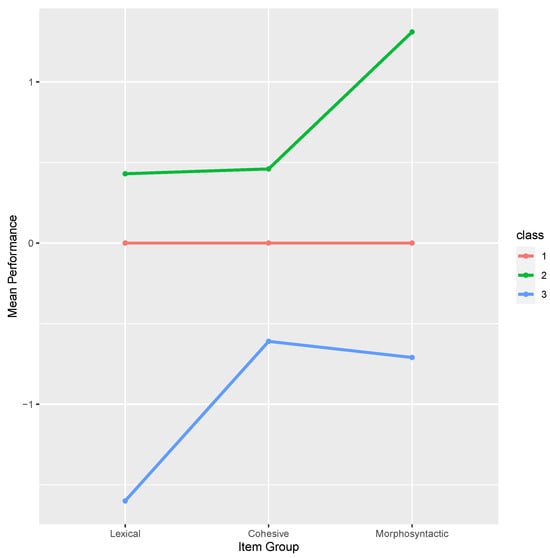
Figure 1
Open AccessCorrection
Correction: Hong et al. Applying SEM, Exploratory SEM, and Bayesian SEM to Personality Assessments. Psych 2024, 6, 111–134
by
Hyeri Hong, Walter P. Vispoel and Alfonso J. Martinez
Psych 2024, 6(1), 376; https://doi.org/10.3390/psych6010022 - 8 Mar 2024
Abstract
Addition of an Author [...]
Full article
Open AccessReview
Work-Related Flow in Contrast to Either Happiness or PERMA Factors for Human Resources Management Development of Career Sustainability
by
Carol Nash
Psych 2024, 6(1), 356-375; https://doi.org/10.3390/psych6010021 - 5 Mar 2024
Cited by 4
Abstract
►▼
Show Figures
In promoting career sustainability, psychological theories historically have informed human resource management (HRM) development—three assessment directions are among them: work-related flow, happiness promotion, and appraising PERMA (Positive Emotions, Engagement, Relationships, Meaning, and Accomplishment) factors. Csikszentmihalyi’s work-related flow represents an optimally challenging work-related process.
[...] Read more.
In promoting career sustainability, psychological theories historically have informed human resource management (HRM) development—three assessment directions are among them: work-related flow, happiness promotion, and appraising PERMA (Positive Emotions, Engagement, Relationships, Meaning, and Accomplishment) factors. Csikszentmihalyi’s work-related flow represents an optimally challenging work-related process. Happiness promotion strives to maintain a pleased satisfaction with the current experience. PERMA represents measurable positive psychological factors constituting well-being. Reliable and validated, the experience of flow has been found to determine career sustainability in contrast to the more often investigated happiness ascertainment or identifying PERMA factors. Career sustainability research to inform HRM development is in its infancy. Therefore, publishers’ commitment to sustainability provides integrity. Given MDPI’s uniquely founding sustainability concern, its journal articles were searched with the keywords “flow, Csikszentmihalyi, work”, excluding those pertaining to education, health, leisure, marketing, non-workers, and spirituality, to determine the utilization of work-related flow to achieve career sustainability. Of the 628 returns, 28 reports were included for potential assessment. Current studies on Csikszentmihalyi’s work-related flow ultimately represented three results. These provide insight into successful, positive methods to develop career sustainability. Consequently, HRM is advised to investigate practices for assessing and encouraging employees’ engagement with work-related flow with the aim of ensuring career sustainability.
Full article
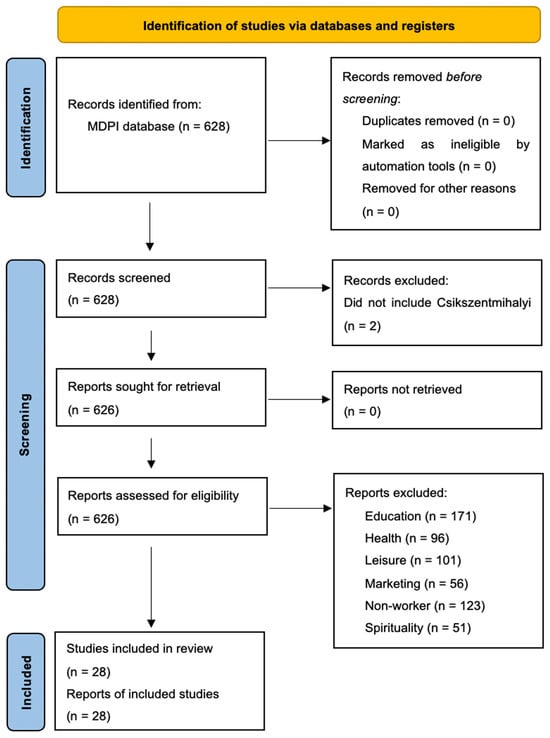
Figure 1
Open AccessArticle
Evidence of Validity, Invariance, and Reliability of the Body Image Dimension in the Body Investment Scale: A Study in Spanish University Students
by
Diego Diaz-Milanes, Carmen Santin Vilariño, Montserrat Andrés-Villas, Ana Segura-Barriga and Pedro Juan Pérez-Moreno
Psych 2024, 6(1), 345-355; https://doi.org/10.3390/psych6010020 - 5 Mar 2024
Abstract
►▼
Show Figures
Background: This study focused on the widely used Body Image subscale, a dimension of the Body Investment Scale developed by Orbach and Mikulincer in 1998. Specifically, we explored its psychometric properties and potential use for health promotion research among young Spanish university students.
[...] Read more.
Background: This study focused on the widely used Body Image subscale, a dimension of the Body Investment Scale developed by Orbach and Mikulincer in 1998. Specifically, we explored its psychometric properties and potential use for health promotion research among young Spanish university students. Method: A sample of 793 participants (75.28% female) aged 18–26 years (M = 20.68; SD = 2.13) completed the questionnaire and related variables. Results: A unidimensional structure was confirmed with a good fit, demonstrating gender- and age-invariance, along with robust internal consistency. The scale exhibited a significant association with self-esteem, life satisfaction, a sense of coherence, and psychological distress. Conclusions: The Body Image subscale can be considered unidimensional. The obtained factor solution provides a reliable, valid, and invariant measure across gender and age for assessing body feelings in Spanish university students. Therefore, the instrument can effectively investigate the relationship between body image and health-related behaviors. Additionally, it can serve as a valuable tool in designing effective health interventions for university students to prevent mental health conditions, such as eating disorders or suicidal behaviors.
Full article

Figure 1
Open AccessSystematic Review
Well-Being Technologies and Positive Psychology Strategies for Training Metacognition, Emotional Intelligence and Motivation Meta-Skills in Clinical Populations: A Systematic Review
by
Eleni Mitsea, Athanasios Drigas and Charalabos Skianis
Psych 2024, 6(1), 305-344; https://doi.org/10.3390/psych6010019 - 4 Mar 2024
Cited by 12
Abstract
►▼
Show Figures
The holistic growth and psychological well-being of people with special needs and disabilities remain high on the priority agenda for sustainable and inclusive education. Digital well-being technologies and especially “smart technologies”, are ready to revolutionize mental health interventions by meeting trainees’ needs and
[...] Read more.
The holistic growth and psychological well-being of people with special needs and disabilities remain high on the priority agenda for sustainable and inclusive education. Digital well-being technologies and especially “smart technologies”, are ready to revolutionize mental health interventions by meeting trainees’ needs and providing them with more positive and transformative mental, emotional, and social experiences. Μeta-skills refer to a set of consciousness-raising competences that incorporate meta-cognitive, social–emotional, and motivational attributes, allowing individuals to intentionally achieve a state of optimal functioning. Although positive psychology and well-being technologies are considered promising intervention approaches, there is less knowledge regarding the effectiveness of such interventions among people with special needs and disabilities, especially in the crucial domain of meta-skills development. Thus, the current systematic review aims to examine positive psychology strategies as well as the synergy with well-being technologies in the development of metacognition, emotional intelligence, and motivation meta-skills in populations with special training needs and disabilities. The PRISMA methodology was utilized to answer the research questions. A total of forty-nine studies met the inclusion criteria. The results indicated that positive psychology strategies improved a wide range of meta-skills, including self-regulation, emotional control, behavioral control, inhibition control, self-awareness, intrapersonal skills, interpersonal skills, adaptation, goal setting, and self-compassion. Artificial intelligence tools, wearables, smart applications, immersive technologies (virtual and augmented reality), neurofeedback and biofeedback technologies, as well as digital games were found to effectively assist such training programs. The results of the current review may provide positive feedback in the discussion about digitally-aided mental health interventions for training the meta-skills of mental and emotional health.
Full article

Figure 1
Open AccessArticle
Early Change in Quality of Life in the Treatment of Anorexia Nervosa
by
Eliza D. Newton, Liquan Liu, Janet Conti, Stephen Touyz, Jon Arcelus, Sloane Madden, Kathleen Pike and Phillipa Hay
Psych 2024, 6(1), 288-304; https://doi.org/10.3390/psych6010018 - 29 Feb 2024
Abstract
►▼
Show Figures
This study aimed to examine whether early change in self-reported quality of life (QoL) was a predictor of outcomes in the treatment of anorexia nervosa (AN). Given suggestions that people with AN overestimate their QoL when unwell, we hypothesised that any early change
[...] Read more.
This study aimed to examine whether early change in self-reported quality of life (QoL) was a predictor of outcomes in the treatment of anorexia nervosa (AN). Given suggestions that people with AN overestimate their QoL when unwell, we hypothesised that any early change in self-reported QoL, be it an early improvement or early worsening, would predict better outcomes in terms of end-of-treatment body mass index (BMI), eating disorder (ED) psychopathology, and QoL. Participants were 78 adult outpatients engaged in cognitive behaviour therapy for anorexia nervosa (CBT-AN) either with or without the embedded compulsive exercise module “compuLsive Exercise Activity TheraPy” (LEAP). Polynomial regression was utilised to examine the effects of varying combinations of baseline and 10-week self-reported physical-health-relatedr QoL (SF-12; PHRQoL subscale), mental-health-related QoL (SF-12; MHRQoL subscale), and eating-disorder-specific QoL (EDQoL; global, psychological, cognitive/physical, financial, and school/work subscales) on end-of-treatment BMI, ED psychopathology, and QoL. Greater magnitudes of early change in global EDQoL scores, both positive and negative, predicted better MHRQoL but not BMI or ED psychopathology at the end of treatment. Psychological EDQoL ratings also accounted for 38.1% of the variance in end-of-treatment ED psychopathology, although tests examining the 6ratings may be meaningful in predicting treatment outcomes. The positive impact of early worsening in QoL ratings suggests that early QoL ratings are inflated due to denial and poor insight. Clinicians should be reassured that early QoL decline does not indicate treatment failure.
Full article

Figure 1
Open AccessReview
Freezing Effect and Bystander Effect: Overlaps and Differences
by
Elena Siligato, Giada Iuele, Martina Barbera, Francesca Bruno, Guendalina Tordonato, Aurora Mautone and Amelia Rizzo
Psych 2024, 6(1), 273-287; https://doi.org/10.3390/psych6010017 - 26 Feb 2024
Cited by 2
Abstract
►▼
Show Figures
The present article provides a detailed comparison of two psychological phenomena, the freezing effect and the bystander effect, across their neurobiological, cognitive, emotional, and behavioral dimensions. This study focuses on identifying and analyzing the similarities and differences between these two responses to stressful
[...] Read more.
The present article provides a detailed comparison of two psychological phenomena, the freezing effect and the bystander effect, across their neurobiological, cognitive, emotional, and behavioral dimensions. This study focuses on identifying and analyzing the similarities and differences between these two responses to stressful and traumatic events. While the freezing effect is characterized by an involuntary neurobiological response to immediate threats, resulting in temporary immobilization or paralysis, the bystander effect describes a cognitive and social phenomenon where individuals refrain from offering help in emergencies when others are present. The study explores affective aspects, including emotional responses and trauma-related impacts associated with both phenomena. Through a comparative analysis, this research unveils important understandings regarding the distinctions among these responses, including their triggers, underlying mechanisms, and observable behaviors. It also highlights overlapping aspects, particularly in how both phenomena can lead to inaction in critical moments. This comparative study contributes to a deeper understanding of the complex interaction between the brain, individual cognition, and social dynamics in the face of danger and stress. The findings of this research have significant implications for understanding human behavior in emergencies, offering valuable perspectives that can be applied in the domains of psychology, training for emergency response, and trauma therapy.
Full article
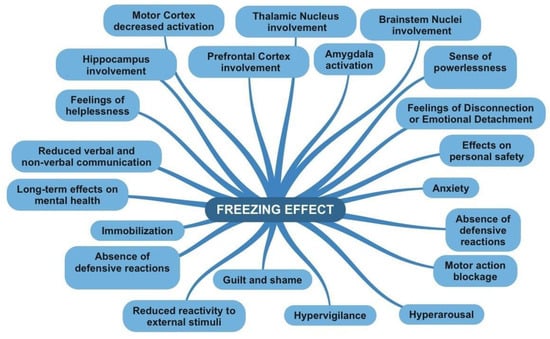
Figure 1
Open AccessReview
The Impact of Dementia on the Psychosocial Well-Being of Informal Caregivers in Asia: A Scoping Review Comparing High-Income and Low–Middle-Income Countries
by
Aiza Amor Padre-e Abayon, Millicent Raymonds, Priya Brahmbhatt, Shelina Samnani and Fahad Hanna
Psych 2024, 6(1), 260-272; https://doi.org/10.3390/psych6010016 - 20 Feb 2024
Cited by 5
Abstract
►▼
Show Figures
The need for informal caregiving has become a crucial topic for researchers and policymakers. This review explores the psychosocial impact on caregivers providing dementia care in high-income and low–middle-income Asian countries. A scoping review was undertaken following the Joanna Briggs Institute (JBI) protocol.
[...] Read more.
The need for informal caregiving has become a crucial topic for researchers and policymakers. This review explores the psychosocial impact on caregivers providing dementia care in high-income and low–middle-income Asian countries. A scoping review was undertaken following the Joanna Briggs Institute (JBI) protocol. A systematic search of four databases (PubMed, ProQuest, Medline, and Medline Complete) was conducted. Articles were screened following the Preferred Reporting Items for Systematic Reviews and Meta-analysis (PRISMA) guidelines. Fourteen articles (11 cross-sectional, 1 longitudinal, 1 case-control, and 1 descriptive phenomenological study) were selected for the final analysis. The most frequently reported findings from low–middle-income countries were dementia caregivers working longer hours and experiencing financial issues, poor physical health, and lower life satisfaction, which progressively and collectively affected caregivers’ psychosocial well-being and quality of life. However, the impact was less significant in high-income Asian countries, particularly those where efforts are being made to identify the burdens associated with caring for people with dementia and providing appropriate support. This review demonstrates clear evidence that caring for people with dementia may affect informal caregivers’ quality of life, particularly in low–middle-income Asian countries. Systematic reviews and meta-analyses may be needed to confirm these findings.
Full article
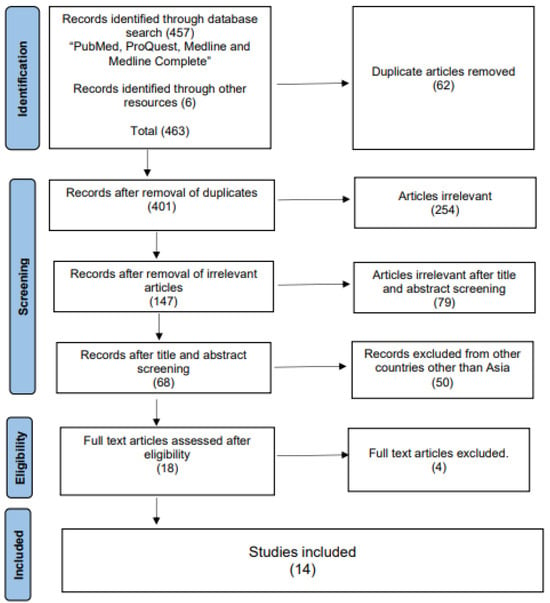
Figure 1
Open AccessArticle
Nonparametric Kernel Smoothing Item Response Theory Analysis of Likert Items
by
Purya Baghaei and Farshad Effatpanah
Psych 2024, 6(1), 236-259; https://doi.org/10.3390/psych6010015 - 19 Feb 2024
Cited by 3
Abstract
►▼
Show Figures
Likert scales are the most common psychometric response scales in the social and behavioral sciences. Likert items are typically used to measure individuals’ attitudes, perceptions, knowledge, and behavioral changes. To analyze the psychometric properties of individual Likert-type items and overall Likert scales, mostly
[...] Read more.
Likert scales are the most common psychometric response scales in the social and behavioral sciences. Likert items are typically used to measure individuals’ attitudes, perceptions, knowledge, and behavioral changes. To analyze the psychometric properties of individual Likert-type items and overall Likert scales, mostly methods based on classical test theory (CTT) are used, including corrected item–total correlations and reliability indices. CTT methods heavily rely on the total scale scores, making it challenging to directly examine the performance of items and response options across varying levels of the trait. In this study, Kernel Smoothing Item Response Theory (KS-IRT) is introduced as a graphical nonparametric IRT approach for the evaluation of Likert items. Unlike parametric IRT models, nonparametric IRT models do not involve strong assumptions regarding the form of item response functions (IRFs). KS-IRT provides graphics for detecting peculiar patterns in items across different levels of a latent trait. Differential item functioning (DIF) can also be examined by applying KS-IRT. Using empirical data, we illustrate the application of KS-IRT to the examination of Likert items on a psychological scale.
Full article

Figure 1
Open AccessArticle
The Positive Association between Grit and Mental Toughness, Enhanced by a Minimum of 75 Minutes of Moderate-to-Vigorous Physical Activity, among US Students
by
Andreas Stamatis, Grant B. Morgan, Ali Boolani and Zacharias Papadakis
Psych 2024, 6(1), 221-235; https://doi.org/10.3390/psych6010014 - 17 Feb 2024
Cited by 6
Abstract
►▼
Show Figures
Drawing from the 2015 Gucciardi et al.’s mental toughness (MT) framework, this study examines the association between grit and MT in US college students, while considering the moderating role of at least 75 min of moderate-to-vigorous physical activity (MVPA) based on recommendations from
[...] Read more.
Drawing from the 2015 Gucciardi et al.’s mental toughness (MT) framework, this study examines the association between grit and MT in US college students, while considering the moderating role of at least 75 min of moderate-to-vigorous physical activity (MVPA) based on recommendations from the American College of Sports Medicine. We administered the Grit-S Scale and the Mental Toughness Index in two samples of a total of 340 US undergraduate student-athletes and graduate students. The Quality Assessment Tool for Observational Cohort and Cross-Sectional Studies was employed to ensure internal validity, while statistical procedures including principal component analysis and regression models were utilized to analyze the collected data. A weighted component combining grit and the interaction between MVPA and grit significantly predicted MT, explaining 23% of its variability. Drawing from a specific conceptual framework, this study provides novel insights into the relationship between grit, engagement in at least 75 min of MVPA per week, and MT among US collegiate students. The findings support a positive association between grit, MVPA, and both MT and a specific component of MT, highlighting the significance of these factors in enhancing performance and suggesting potential implications for future research and practical applications in the field.
Full article
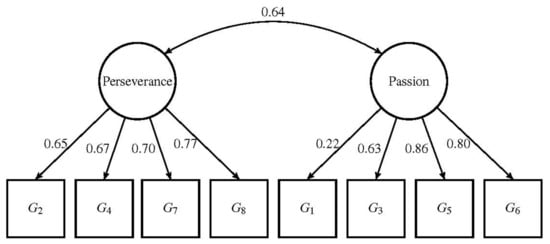
Figure 1
Open AccessReview
Walking Forward Together—The Next Step: Indigenous Youth Mental Health and the Climate Crisis
by
Michael Brown, Sabina Mirza, Jay Lu and Suzanne L. Stewart
Psych 2024, 6(1), 210-220; https://doi.org/10.3390/psych6010013 - 9 Feb 2024
Cited by 4
Abstract
►▼
Show Figures
The climate crisis has resulted in mental health challenges for varying demographic groups of all ages, but Indigenous youth are one of the most vulnerable populations impacted by the climate crisis. Conversations regarding Indigenous youth and the climate crisis are often held without
[...] Read more.
The climate crisis has resulted in mental health challenges for varying demographic groups of all ages, but Indigenous youth are one of the most vulnerable populations impacted by the climate crisis. Conversations regarding Indigenous youth and the climate crisis are often held without their presence or input, identifying a gap in research and the literature. The findings from this review include the components of climate change regarding the mental health of Indigenous youth as being direct and indirect pathways of impact and resistance. Direct pathways include the more immediate and physical consequences of climate change associated with mental unwellness. Indirect pathways include less obvious consequences to those without lived experience, such as disruptions to culture and magnified social inequities, which also result in negative mental health consequences. The resistance component explores how Indigenous youth have been protesting and actively speaking out, which highlights the importance of the inclusion of Indigenous youth voices in decision-making spaces related to mental health service resources (i.e., funding) and policy in climate action. This review ends with a discussion on ways forward, the limitations herein, and how the uniqueness of the research may contribute to climate justice.
Full article
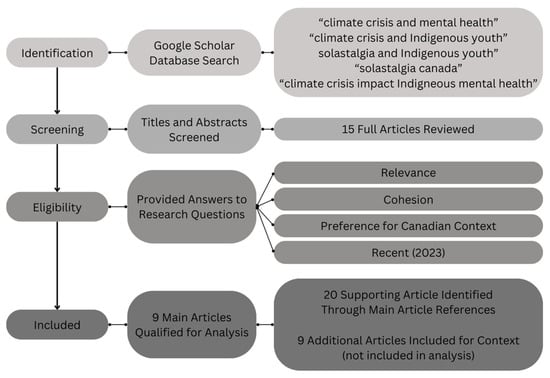
Figure 1
Open AccessArticle
The IADC Grief Questionnaire as a Brief Measure for Complicated Grief in Clinical Practice and Research: A Preliminary Study
by
Fabio D’Antoni and Claudio Lalla
Psych 2024, 6(1), 196-209; https://doi.org/10.3390/psych6010012 - 7 Feb 2024
Cited by 2
Abstract
►▼
Show Figures
IADC (induced after-death communication) therapy is a grief treatment developed by Botkin that is increasingly being acknowledged for its effectiveness in various countries worldwide. In clinical practice, professionals trained in IADC therapy employ a brief evaluation tool called the IADC Grief Questionnaire (IADC-GQ)
[...] Read more.
IADC (induced after-death communication) therapy is a grief treatment developed by Botkin that is increasingly being acknowledged for its effectiveness in various countries worldwide. In clinical practice, professionals trained in IADC therapy employ a brief evaluation tool called the IADC Grief Questionnaire (IADC-GQ) to determine whether mourning can be disturbed or stopped, resulting in complicated grief. This preliminary research aimed to establish the psychometric properties of the IADC-GQ. The factor structure was analyzed in a sample consisting of 113 participants undergoing psychological treatment who had endured the loss of a loved one for a minimum of six months. The findings revealed a two-dimensional framework comprising two distinct factors: the “Clinical Score”, encompassing the most distressing elements of grief, and the “Continuing Bond” factor, which is associated with feelings of connection to the departed and thoughts regarding the existence of life after death. The IADC-GQ has the potential to be easily and quickly employed in both research and clinical settings. Moreover, it can qualitatively assist therapists during clinical interviews by highlighting the key areas where the grieving process may encounter obstacles.
Full article
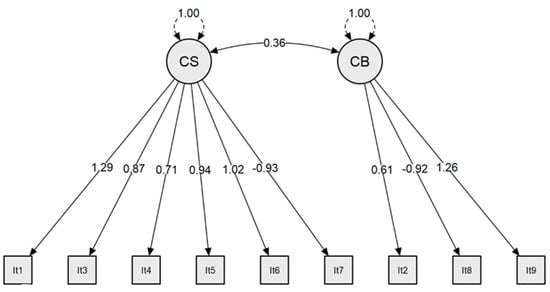
Figure 1
Open AccessArticle
In Mind and Spirit: The Psychosocial Impacts of Religiosity in Youth Mental Health Treatment
by
Katherine Klee and John P. Bartkowski
Psych 2024, 6(1), 177-195; https://doi.org/10.3390/psych6010011 - 6 Feb 2024
Abstract
The rise in suicides among elementary- to high-school-aged youth has alarmed health professionals for years, only to be amplified by the long-lasting effects of the COVID-19 pandemic. Religion and spirituality offer many people significant psychosocial support in pandemic circumstances, often acting as platforms
[...] Read more.
The rise in suicides among elementary- to high-school-aged youth has alarmed health professionals for years, only to be amplified by the long-lasting effects of the COVID-19 pandemic. Religion and spirituality offer many people significant psychosocial support in pandemic circumstances, often acting as platforms for hope and social connectedness. Yet, given the adultocentric world they inhabit, young people must often negotiate or reconsider the role of religion and spirituality in the context of their developmental trajectory. This research explores mental health professionals’ approaches to religiosity and spirituality in the delivery of therapeutic care to youth at risk of suicide. Qualitative analyses of interview transcripts conducted with youth mental health clinicians in the state of Texas underscore a myriad of contextual factors related to treating suicidal ideation and behaviors. We categorize our findings according to licensed mental health professionals’ (1) navigation of youth clients’ religious/spiritual preferences aligned with or opposed to familial preferences; (2) selective integration of youth-oriented religious/spiritual elements into treatment as warranted; and (3) reflections on the impacts of religion/spirituality on treatment efficacy for child and adolescent clients. This study adds to current research on religion and spirituality’s impact on mental health and its therapeutic integration into treatment practices tailored for youth.
Full article
Open AccessArticle
Emotions and Coping: “What I Feel about It, Gives Me More Strategies to Deal with It?”
by
Cristina de Sousa, Helena Vinagre, João Viseu, João Ferreira, Helena José, Isabel Rabiais, António Almeida, Susana Valido, Maria João Santos, Sandy Severino and Luís Sousa
Psych 2024, 6(1), 163-176; https://doi.org/10.3390/psych6010010 - 30 Jan 2024
Cited by 1
Abstract
Background: Personal emotions and affects have been identified and studied in the context of pandemics, as well as coping strategies centered on emotional regulation or the balance between positive and negative emotions. Objectives: The objectives of this paper are to identify an emotion
[...] Read more.
Background: Personal emotions and affects have been identified and studied in the context of pandemics, as well as coping strategies centered on emotional regulation or the balance between positive and negative emotions. Objectives: The objectives of this paper are to identify an emotion and affect structure in our sample and analyze the relationship of these dimensions with resilient coping in the context of the COVID-19 pandemic. Method: This study employed a cross-sectional design that involved a non-probabilistic sample with 598 participants over the age of 18, with 51.1% being female, and an average age of 40.73 years. First, the emotional structure was identified through principal component analysis (PCA). Secondly, a linear regression analysis was performed to investigate emotional dimensions as predictors of coping. Results: A valid and reliable emotional structure with four dimensions was identified. The regression model revealed that coping is positively associated with the active and positive dimension and negatively correlated with the negative and moral dimensions. Conclusions: Emotional dimensions are predictors of coping, with moral and negative dimensions having a negative effect, while active and positive dimensions have a positive effect. When designing interventions for coping strategies, multiple dimensions of emotions and affective states in people who are in vulnerable situations must be considered.
Full article
Open AccessArticle
Proteins in Scalp Hair of Preschool Children
by
Cynthia R. Rovnaghi, Kratika Singhal, Ryan D. Leib, Maria Xenochristou, Nima Aghaeepour, Allis S. Chien, Deendayal Dinakarpandian and Kanwaljeet J. S. Anand
Psych 2024, 6(1), 143-162; https://doi.org/10.3390/psych6010009 - 29 Jan 2024
Cited by 1
Abstract
►▼
Show Figures
Background. Early childhood experiences have long-lasting effects on subsequent mental and physical health, education, and employment. The measurement of these effects relies on insensitive behavioral signs, subjective assessments by adult observers, neuroimaging or neurophysiological studies, or retrospective epidemiologic outcomes. Despite intensive research, the
[...] Read more.
Background. Early childhood experiences have long-lasting effects on subsequent mental and physical health, education, and employment. The measurement of these effects relies on insensitive behavioral signs, subjective assessments by adult observers, neuroimaging or neurophysiological studies, or retrospective epidemiologic outcomes. Despite intensive research, the underlying mechanisms of these long-term changes in development and health status remain unknown. Methods. We analyzed scalp hair from healthy children and their mothers using an unbiased proteomics platform combining tandem mass spectrometry, ultra-performance liquid chromatography, and collision-induced dissociation to reveal commonly observed hair proteins with a spectral count of 3 or higher. Results. We observed 1368 non-structural hair proteins in children and 1438 non-structural hair proteins in mothers, with 1288 proteins showing individual variability. Mothers showed higher numbers of peptide spectral matches and hair proteins compared to children, with important age-related differences between mothers and children. Age-related differences were also observed in children, with differential protein expression patterns between younger (2 years and below) and older children (3–5 years). We observed greater similarity in hair protein patterns between mothers and their biological children compared with mothers and unrelated children. The top 5% of proteins driving population variability represented biological pathways associated with brain development, immune signaling, and stress response regulation. Conclusions. Non-structural proteins observed in scalp hair include promising biomarkers to investigate the long-term developmental changes and health status associated with early childhood experiences.
Full article
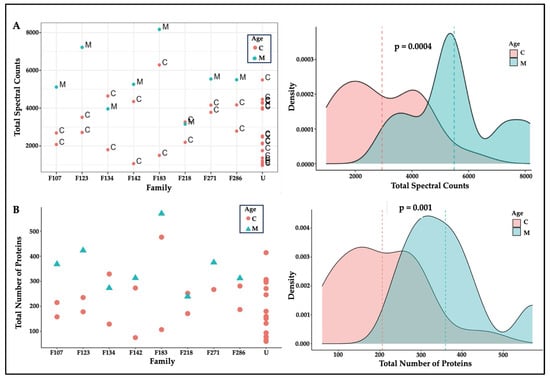
Figure 1
Open AccessBrief Report
A Gender Analysis of Hospital Workers during the COVID-19 Pandemic Using the Distress Questionnaire-5: A Cross-Sectional Study
by
Stefania De Simone, Massimo Franco, Giuseppe Servillo and Maria Vargas
Psych 2024, 6(1), 135-142; https://doi.org/10.3390/psych6010008 - 29 Jan 2024
Abstract
At high risk of experiencing symptoms of stress, female healthcare workers also faced the psychosocial impacts of the COVID-19 pandemic. The aims of this study are to investigate whether women are associated with a high level of psychological distress in comparison to men
[...] Read more.
At high risk of experiencing symptoms of stress, female healthcare workers also faced the psychosocial impacts of the COVID-19 pandemic. The aims of this study are to investigate whether women are associated with a high level of psychological distress in comparison to men and to explore the risk factors associated with a high level of psychological distress in women. For this purpose, a multivariable logistic regression model was tested with sex, age and professional role as predictors of psychological distress in women. We found that (1)women working in the four Italian hospitals analyzed during the COVID-19 pandemic experienced more psychological distress than men, (2) being between 26 and 35 years old and being a medical doctor were associated with the risk of women developing psychological distress, (3) being a female medical doctor presents a 23% risk of developing psychological distress, (4) female nurses working in COVID-19s ward had a 50% risk and female non-healthcare personnel working in COVID-19 wards had a 69% risk of developing psychological distress. In conclusion, our results suggest that interventions for supporting and promoting mental well-being among female healthcare workers are mandatory, especially for the professional categories of nurses and non-healthcare workers.
Full article
(This article belongs to the Special Issue PTSD During the COVID-19 Pandemic)
►▼
Show Figures
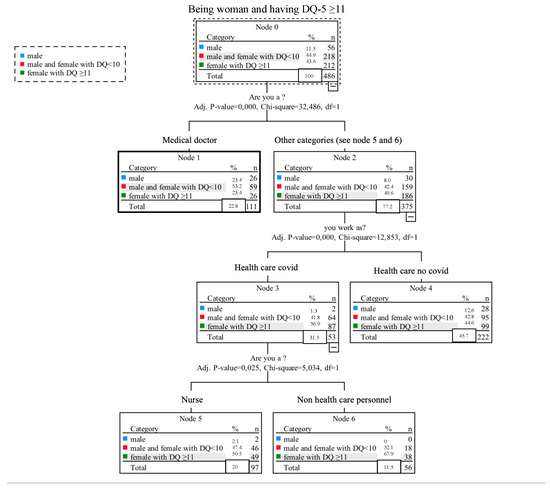
Figure 1
Open AccessArticle
Applying SEM, Exploratory SEM, and Bayesian SEM to Personality Assessments
by
Hyeri Hong, Walter P. Vispoel and Alfonso J. Martinez
Psych 2024, 6(1), 111-134; https://doi.org/10.3390/psych6010007 - 25 Jan 2024
Cited by 10
Abstract
►▼
Show Figures
Despite the importance of demonstrating and evaluating how structural equation modeling (SEM), exploratory structural equation modeling (ESEM), and Bayesian structural equation modeling (BSEM) work simultaneously, research comparing these analytic techniques is limited with few studies conducted to systematically compare them to each other
[...] Read more.
Despite the importance of demonstrating and evaluating how structural equation modeling (SEM), exploratory structural equation modeling (ESEM), and Bayesian structural equation modeling (BSEM) work simultaneously, research comparing these analytic techniques is limited with few studies conducted to systematically compare them to each other using correlated-factor, hierarchical, and bifactor models of personality. In this study, we evaluate the performance of SEM, ESEM, and BSEM across correlated-factor, hierarchical, and bifactor structures and multiple estimation techniques (maximum likelihood, robust weighted least squares, and Bayesian estimation) to test the internal structure of personality. Results across correlated-factor, hierarchical, and bifactor models highlighted the importance of controlling for scale coarseness and allowing small off-target loadings when using maximum likelihood (ML) and robust weighted least squares estimation (WLSMV) and including informative priors (IP) when using Bayesian estimation. In general, Bayesian-IP and WLSMV ESEM models provided noticeably best model fits. This study is expected to serve as a guide for professionals and applied researchers, identify the most appropriate ways to represent the structure of personality, and provide templates for future research into personality and other multidimensional representations of psychological constructs. We provide Mplus code for conducting the demonstrated analyses in the online supplement.
Full article

Figure 1
Open AccessArticle
Personality Traits Leading Respondents to Refuse to Answer a Forced-Choice Personality Item: An Item Response Tree (IRTree) Model
by
Martin Storme, Nils Myszkowski, Emeric Kubiak and Simon Baron
Psych 2024, 6(1), 100-110; https://doi.org/10.3390/psych6010006 - 10 Jan 2024
Cited by 1
Abstract
►▼
Show Figures
In the present article, we investigate personality traits that may lead a respondent to refuse to answer a forced-choice personality item. For this purpose, we use forced-choice items with an adapted response format. As in a traditional forced-choice item, the respondent is instructed
[...] Read more.
In the present article, we investigate personality traits that may lead a respondent to refuse to answer a forced-choice personality item. For this purpose, we use forced-choice items with an adapted response format. As in a traditional forced-choice item, the respondent is instructed to choose one out of two statements to describe their personality. However, we also offer the respondent the option of refusing to choose. In this case, however, the respondent must report a reason for refusing to choose, indicating either that the two statements describe them equally well, or that neither statement describes them adequately. We use an Item Response Tree (IRTree) model to simultaneously model refusal to choose and the reason indicated by the respondent. Our findings indicate that respondents who score high on openness are more likely to refuse to choose, and they tend to identify more often with both statements in the forced-choice item. Items containing non-socially desirable statements tend to be skipped more often, with the given reason being that neither proposition describes the respondent well. This tendency is stronger among respondents who score high on agreeableness, that is, a trait that is typically related to social desirability. We discuss the theoretical and practical implications of our findings.
Full article
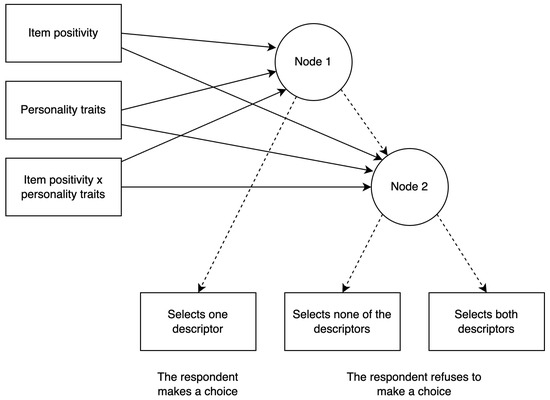
Figure 1
Highly Accessed Articles
Latest Books
E-Mail Alert
News
Topics





